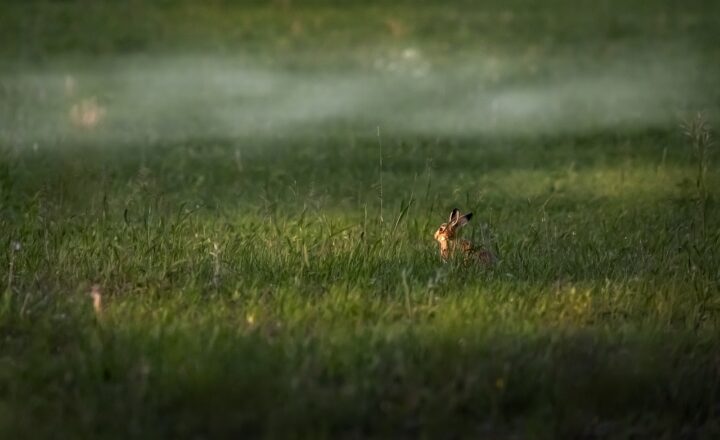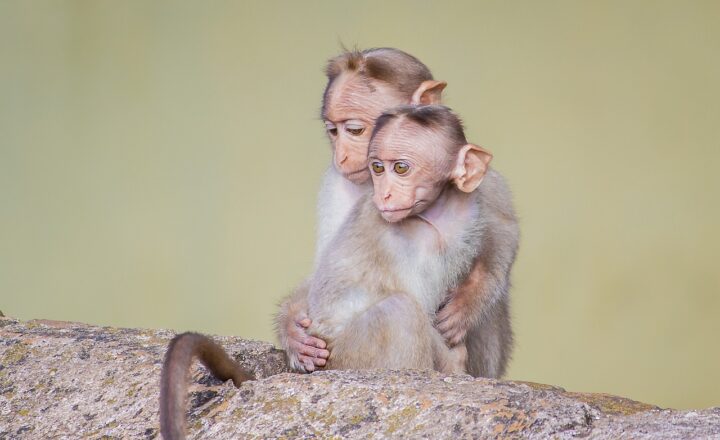The First Primates: How Ancient Monkeys Lived and Evolved Over Millennia
November 14, 2024

The history of primates is a fascinating journey that takes us back millions of years, allowing us to unlock secrets about early human evolution and our relationship with other species. From the tiny treetop gliders of the Eocene epoch to the diverse array of modern monkeys we see today, the story of the first primates is filled with transformations shaped by environmental changes, adaptations, and survival strategies.
1. The Origins of Primates
Primates first appeared in the late Cretaceous period, around 65 million years ago, shortly after the extinction of the dinosaurs. Scientists believe that primates shared a common ancestor with modern rodents and lagomorphs. The earliest primates were small, arboreal creatures that thrived in lush, forested environments. Two primary branches developed: prosimians, like lemurs and tarsiers, and simians, which would eventually give rise to monkeys and apes.
The evolution of primates is linked to significant climatic changes that began in the late Paleocene, leading to the expansion of tropical forests across the globe. Primates became increasingly adapted to life in the trees, developing traits such as enhanced vision, the ability to grasp branches, and social behavior that would help them survive in their arboreal habitats.
2. Evolution of Key Characteristics
As primates evolved, several key features emerged that distinguished them from other mammals:
- Grasping Hands and Feet: Unlike many mammals, primates developed flexible limbs with opposable thumbs, enabling them to grasp branches and manipulate objects with remarkable dexterity. This ability to grasp was essential for navigating the complex three-dimensional environment of trees.
- Binocular Vision: Primates developed forward-facing eyes that allowed for depth perception and enhanced visual acuity, crucial for judging distances between branches while leaping through the canopy.
- Social Structures: Many early primates exhibited complex social behaviors, forming groups to protect against predators and enhance foraging success. Social bonds facilitated communication and cooperation, essential for their survival in a dynamic environment.
These traits provided significant advantages, allowing early primates to thrive in their ecological niches and adapt to various environments.
3. The Great Divergence: Simians and Prosimians
Approximately 50 million years ago, during the Eocene epoch, the primate lineage split into two major groups: prosimians and simians.
– Prosimians: Represented by lemurs, lorises, and tarsiers, prosimians retained many primitive features. They are typically smaller, have a keen sense of smell, and tend to be nocturnal. The isolation of Madagascar led to a unique evolutionary path that resulted in a rich diversity of lemur species, uniquely adapted to the island’s environment.
– Simians: This group further diversified into two major branches: platyrrhines (New World monkeys) and catarrhines (Old World monkeys and apes). New World monkeys, such as capuchins and spider monkeys, have prehensile tails and broader noses. In contrast, Old World monkeys, like baboons, display greater sexual dimorphism and have non-prehensile tails.
This divergence marked a significant evolutionary point, leading to the vast diversity we witness in primates today.
4. Adaptations Through Time
As primates continued to evolve, they adapted to various ecological niches, leading to specialized behaviors and physical features:
- Dietary Diversity: Some primates became frugivores, primarily eating fruits, while others evolved into folivores, specializing in leaf consumption. This dietary adaptation influenced their dental structure, digestive systems, and foraging strategies. The social structures of primates often evolved based on their diet, with frugivores typically forming larger, more dynamic groups.
- Locomotion: Different primate species developed unique modes of transport. For instance, gibbons evolved brachiation, swinging from limb to limb, while baboons adapted to terrestrial habitats, showcasing both arboreal and ground-dwelling abilities. These adaptations proved crucial for accessing food and evading predators.
- Social Complexity: The social structure of primates diversified significantly, with some species exhibiting intricate hierarchies and social interaction. Cooperative breeding, grooming behaviors, and parental investment became increasingly important, enhancing group cohesion and collective survival.
These adaptations allowed primates to exploit new niches and develop unique behaviors to survive in ever-changing environments.
5. The Arrival of Hominids: The Road to Humanity
About 20 million years ago, the evolutionary path of simians took a crucial turn with the emergence of the hominids. This lineage, which includes modern humans, chimps, and bonobos, diverged from the ancestors of gorillas.
The hominids displayed distinct adaptations:
- Bipedalism: One of the most significant adaptations was the ability to walk upright on two legs, allowing early hominids to cover greater distances and freeing their hands for tool use and foraging. This evolutionary change marked a turning point in primate evolution, leading to the eventual development of human species.
- Tool Use: Enhanced cognitive abilities led to the creation and use of tools, a hallmark of human evolution. Evidence suggests that even early hominids displayed rudimentary tool-making skills around 2.5 million years ago, which laid the foundation for human technological advancement.
The path from ancient primates to modern humans is an intricate tale of adaptation, innovation, and survival against ever-changing environmental pressures.
6. Conclusion: What We Can Learn from Ancient Primates
The study of ancient monkeys and their evolution provides invaluable insights into our own lineage. By understanding the traits and behaviors that enabled our primate ancestors to thrive, we can gain perspective on our place in the animal kingdom and the challenges facing our species today. Climate change, habitat loss, and social structures are not only contemporary issues but historical challenges passed down through generations.
As we reflect on the shared ancestry and evolutionary journey of primates, it becomes evident that our survival depends on the choices we make for the future of our planet and its inhabitants. The life lessons learned from our ancient cousins remind us of the importance of adaptability, social cooperation, and ecological awareness in a rapidly changing world.







